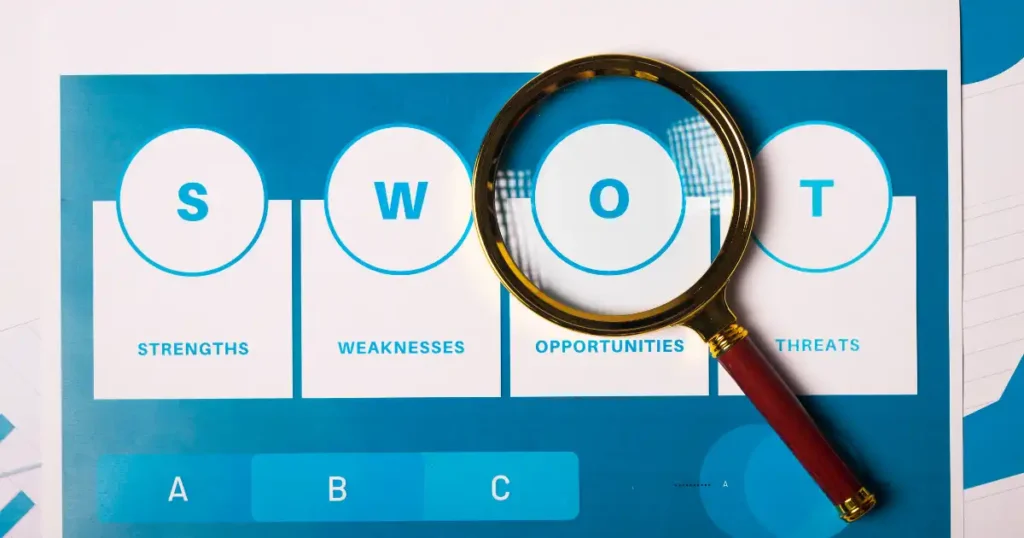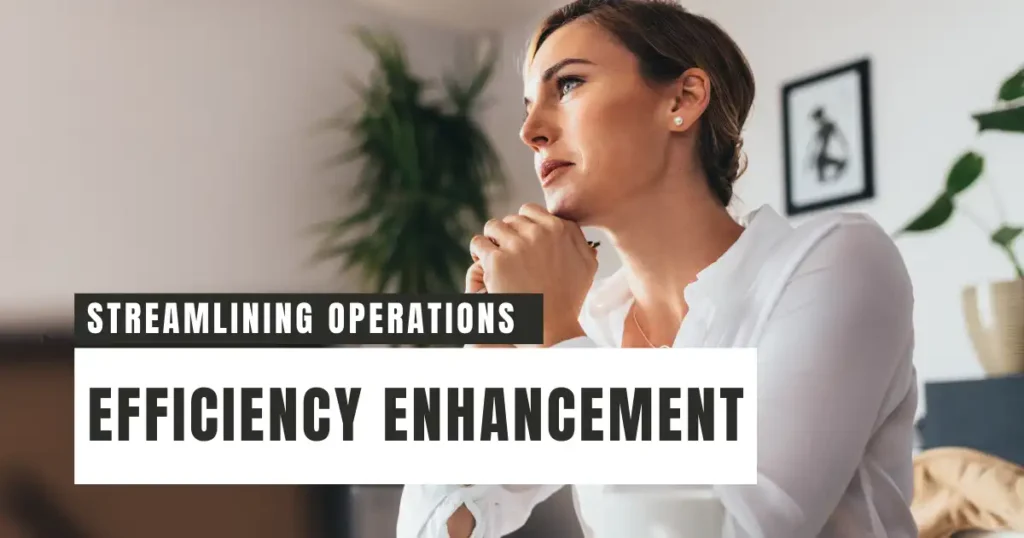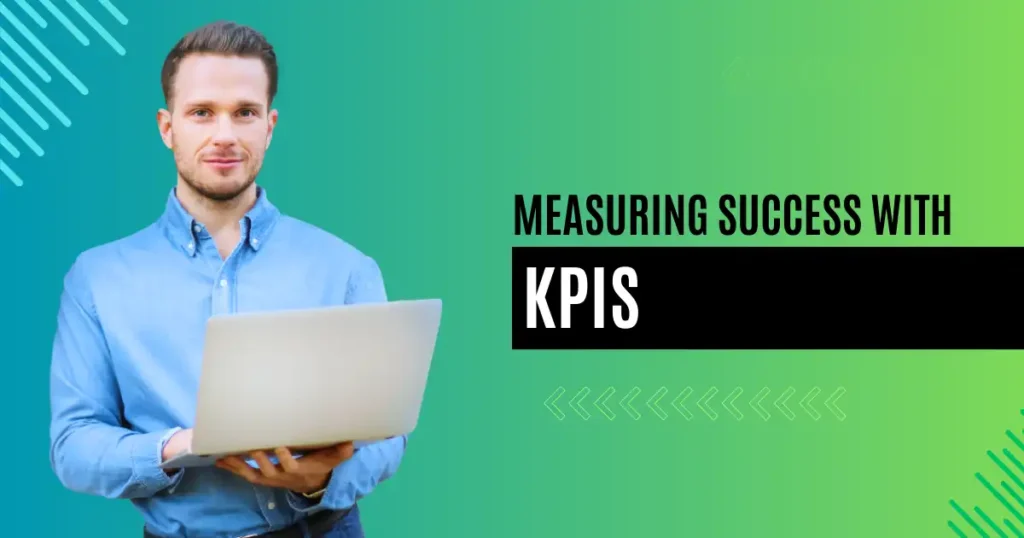Table of Contents
Process improvement in HR is an approach to business processes which is centrally focused on identifying how to take a process from one state, move it to another, and then deliver on that vision. It is most effective when delivered in those sectors which are ripe for process improvement. Those which have large, complex, multi-department processes which straddle many teams, and many operations for many purposes. It is a great way of tackling the complex and turning it into the lean, the simple and the straightforward.
HR is one of those areas of a business that can be categorized in the way described above. They have processes which operate across many departments (Compensation, Talent Acquisition, Recruitment & Onboarding etc.) interacting with many people and directly impacting colleagues and “customers” alike. With that in mind, this article is going to explore the role of process improvement within the world of HR.
We will explore what this would look like, why to do it and how through a series of examples and by thinking about how HR is unique and therefore requires a unique approach.
What makes HR unique?
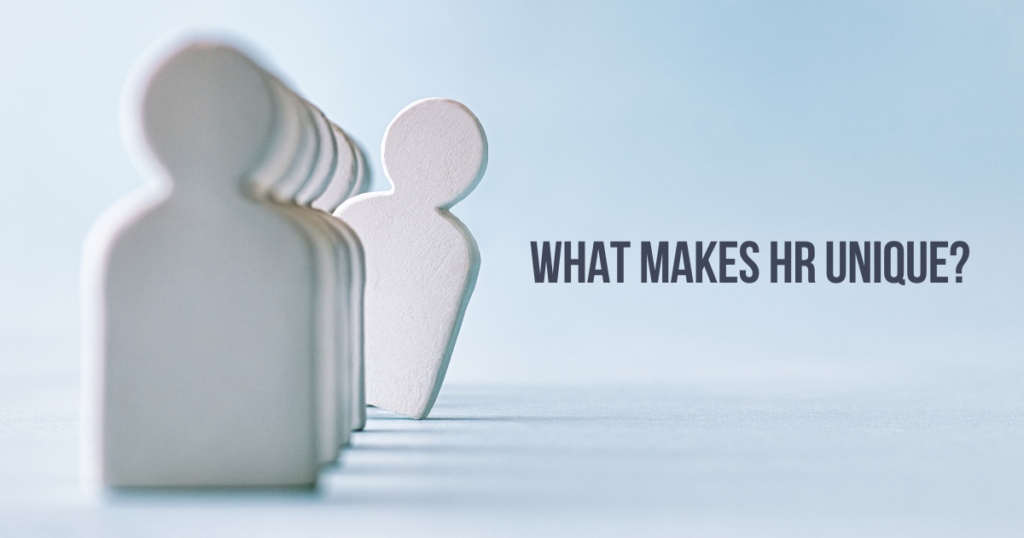
HR processes are almost all processes which interact with people on some level and at some stage. They are designed with people in mind and will be focused on people. This can include being built to deliver something specific for a colleague. They can be built to deliver a service that can be used only by internal colleagues. They can be built to make a colleague’s time in the business easier, more stable and more comfortable.
They can also be built to protect the company, its leaders, managers and other staff in the case of disputes and legal uncertainties. Given the fact that people are the beating heart of HR processes when delivering process improvements and process change, you must keep people, their impact on them and their role within the wider ecosystem of processes in mind. In many other departments outside of HR, people are not the central purpose of the process, and therefore neither is their happiness or satisfaction.
List of HR processes which could be improved using process improvement
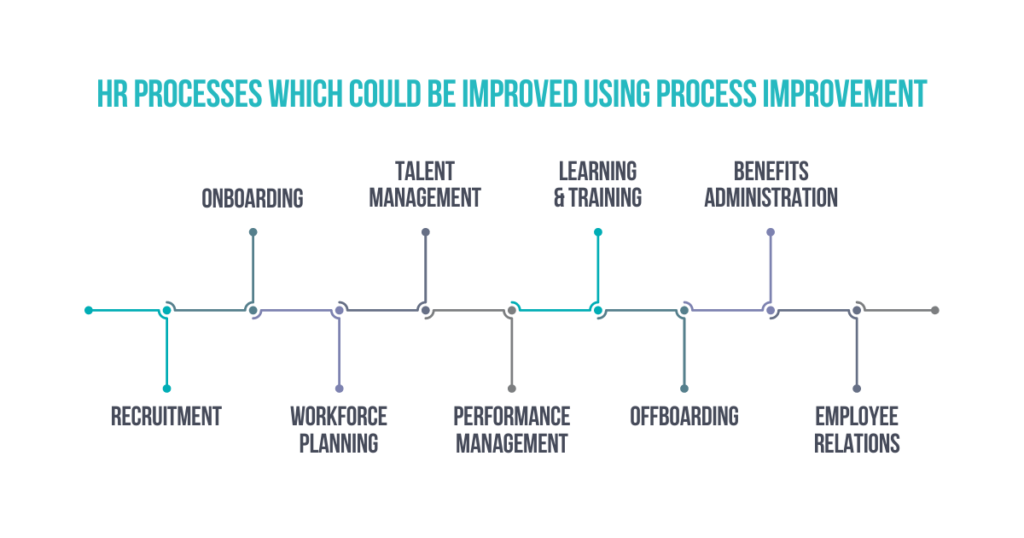
The following HR processes are ripe for process improvement due to three key factors.
- Their complexity and largess.
- Their focus on the individual (colleague, applicant etc.)
- Their impact on the performance of wider operations.
These processes include (but are not limited to):
Recruitment: The advertising, finding, recruiting and support of new talent can be a highly complex operation and involve lots of individuals and moving parts. Improving this process can lead to improvements in the experience of potential and actual candidates.
Onboarding: Bringing new joiners into the business successfully can be a complex operation, and indeed many companies get this wrong. Improving this process is really important because it is the portal to your business. If a new joiner has a terrible or compromised experience when entering the business, this could leave a sour taste in their mouth and be difficult to remove.
Workforce Planning: Managing resources, planning for their use, recruitment, evolving their roles etc. all fall under this umbrella. A streamlined effective way of planning for your workforce and managing it can save precious time to be reinvested back into the business.
Talent Management: Ensuring your top talent stays happy and remains within your organization is vitally important for the continuing positive deployment of your operations. You want to improve these processes to ensure they are simple. Top talent likes simple processes, simple delivery of support and an easy way to know what they can do to develop further.
Performance Management: As well as managing the talent within the business, you need to be managing the performance of all staff. For those not performing so well, structured performance improvement plans need to be created, time needs to be allocated to support and activities deployed to remove those unable to perform. All of this takes time, so process improvements here should focus on how can we reallocate time from deploying the process to supporting our resources well.
Learning & Training: Building out good training plans is crucial for your colleague’s happiness and retention, but you need to ensure you do not take a one-size-fits-all approach here. Tailor the plans, and spend time building out plans suitable for the range of learning needs within your business. Improvements here should be on making sure training plans can be developed and deployed quickly and to a tailorable standard.
Offboarding: Removing someone from the business can be just as important as bringing them in, and it needs to be done right. This is a good way to not burn bridges, keep leavers as satisfied as they can be and avoid any risk of brand damage.
Benefits administration: Designing, administering and delivering the compensation and benefits work within an organization is a huge undertaking. This will involve many different teams who all need to be talking to one another regularly – whether that’s individuals OR the systems they use. Delivering process improvement here is about streamlining the way this communication can flow between all departments, focusing on ensuring the colleagues get the pay and benefits they expect and minimizing disruption and complaints along the way.
Employee relations: This area can often be wrapped in legal considerations and ramifications if not delivered correctly, so is of critical importance. Process improvement work here will focus on ensuring those working in this field have the time, space and availability to deliver the legal, governance and organizational needs and requirements diligently and in line with policy.
Conclusion
The key takeaway from this is people. When dealing with HR processes, you need to ensure the person central to the process is at the forefront of your mind and the changes you seek to make. This can include the colleague, the person delivering the process, the new joiner, the end user, the client etc. Whoever it may be, given the sheer impact of HR processes on the individual, you must design solutions with them in mind.
To improve HR processes, identify the need, identify the end users and then identify then design a process which can ensure the need is met to a highly satisfactory level by the desired end user, each and every time. This will often entail the process being lean, streamlined, efficient and highly effective.



